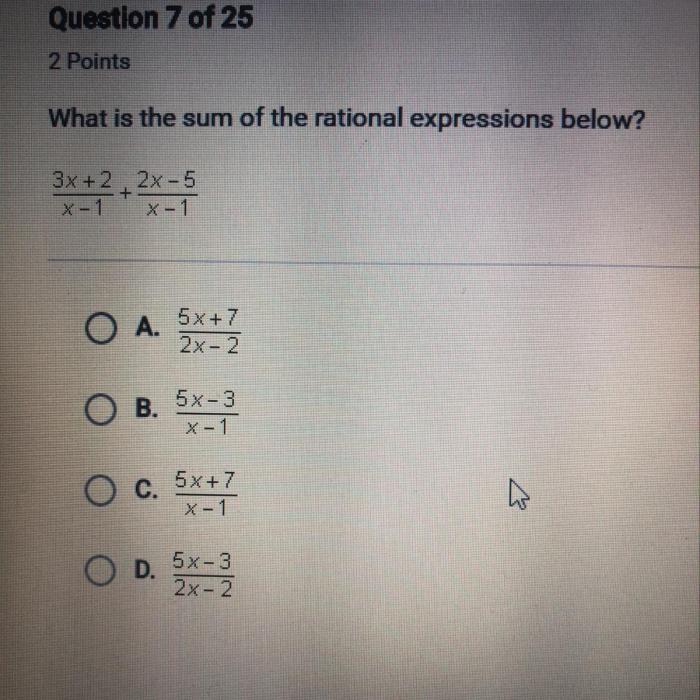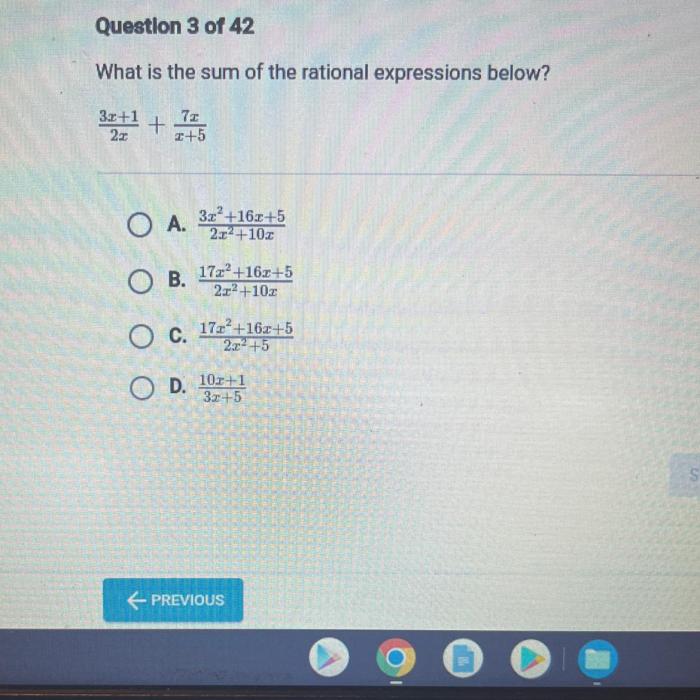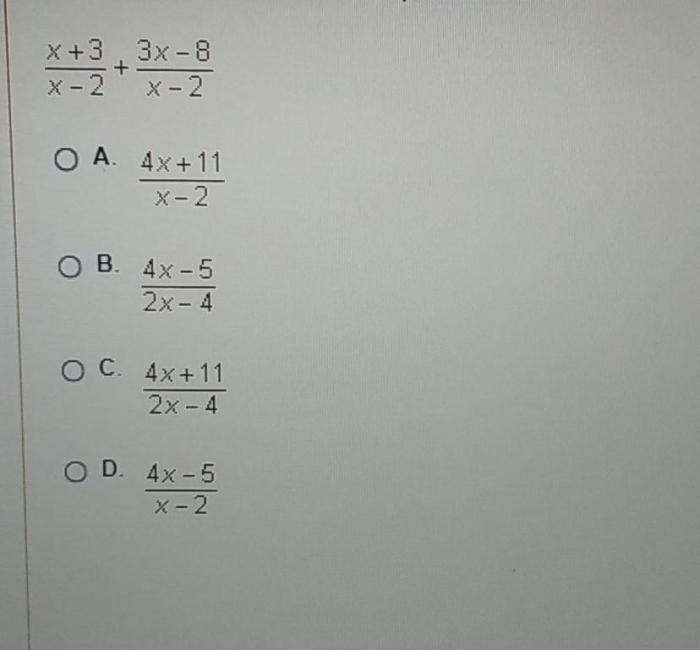What is the sum of the rational expressions below? This question marks the commencement of an enlightening journey into the realm of rational expressions and their summation. Rational expressions, embodying the quotient of two polynomials, unveil a rich tapestry of mathematical concepts that govern diverse real-world phenomena.
The exploration that follows will delve into the intricacies of rational expressions, unraveling their properties and revealing the techniques employed to determine their sum. We shall embark on a voyage of discovery, illuminating the applications of this concept in various fields, and culminating in a profound understanding of its significance.
What is the Sum of Rational Expressions?

A rational expression is an algebraic expression that represents the quotient of two polynomials. The sum of rational expressions is the result of adding two or more rational expressions together. Finding the sum of rational expressions involves identifying the common denominator, adding the numerators while keeping the denominator the same, and simplifying the resulting fraction.
Methods for Finding the Sum of Rational Expressions

Identifying the Common Denominator
The first step in finding the sum of rational expressions is to identify the common denominator. The common denominator is the least common multiple (LCM) of the denominators of the rational expressions being added.
Adding the Numerators
Once the common denominator has been identified, the numerators of the rational expressions can be added while keeping the denominator the same.
Simplifying the Resulting Fraction, What is the sum of the rational expressions below
The resulting fraction may need to be simplified. This can be done by factoring the numerator and denominator and canceling any common factors.
Examples of Summing Rational Expressions: What Is The Sum Of The Rational Expressions Below

Example 1:Find the sum of the rational expressions $\frac1x+2$ and $\frac2x-1$. Solution:
- The common denominator is $(x+2)(x-1)$.
- Adding the numerators: $\frac1x+2+\frac2x-1=\frac1(x-1)+2(x+2)(x+2)(x-1)=\fracx-1+2x+4(x+2)(x-1)=\frac3x+3(x+2)(x-1)$
- The resulting fraction is simplified: $\frac3x+3(x+2)(x-1)=\frac3(x+1)(x+2)(x-1)$
Applications of Summing Rational Expressions

Summing rational expressions is useful in a variety of real-world scenarios, including:
- Physics:Calculating the combined resistance of resistors in a circuit.
- Chemistry:Determining the concentration of a solution after mixing two solutions.
- Economics:Finding the total cost of goods or services.
FAQ Section
What is a rational expression?
A rational expression is a mathematical expression that represents the quotient of two polynomials.
How do you find the sum of rational expressions?
To find the sum of rational expressions, you need to identify the common denominator, add the numerators while keeping the denominator the same, and simplify the resulting fraction.

